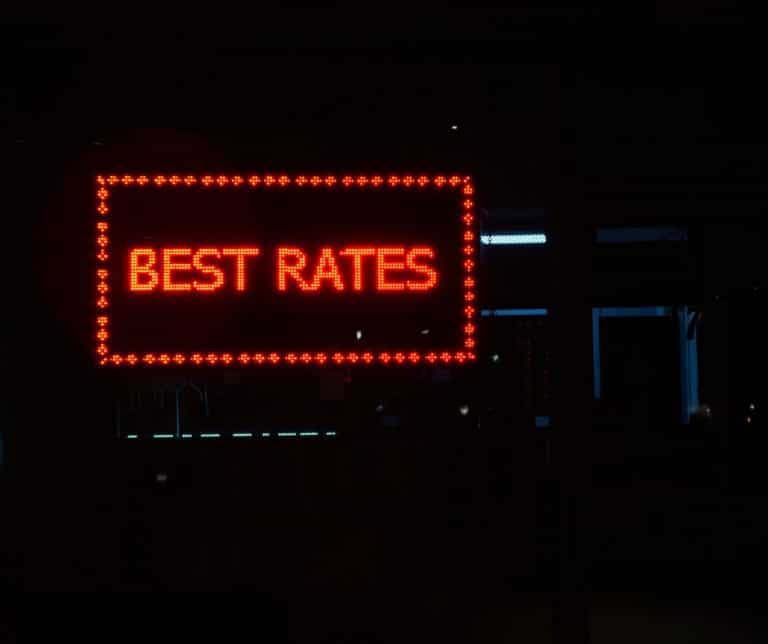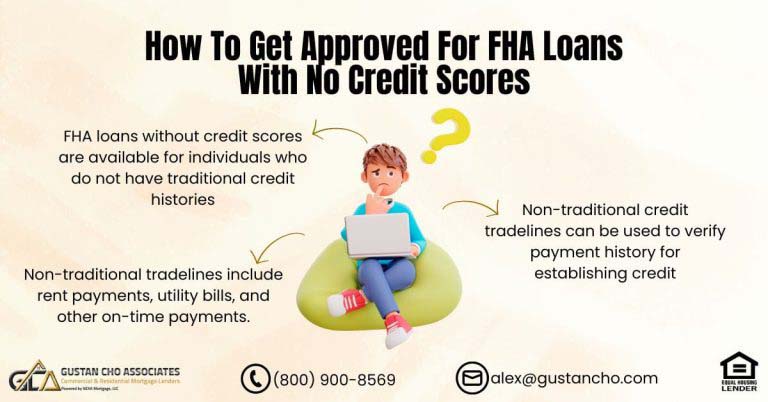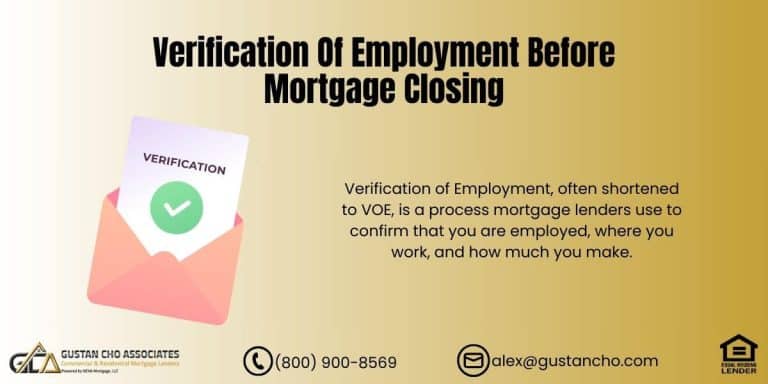This guide covers the top reasons to refinance your current home loan. Many homeowners should be thinking of refinancing your current mortgage to see if there are ways of saving money. Most homeowners do not realize the type of money they can save by refinancing their current home loan.
Top reasons to refinance a home loan is the following:
- Refinance ex-spouse off the current home loan.
- Refinancing into a lower mortgage interest rate can save tens of thousands over the term of the loan.
- Refinance FHA loan to conventional loan and avoid paying annual FHA mortgage insurance premium.
- Refinance co-borrower and/or non-occupant co-borrowers off the loan.
- Do a cash-out refinance mortgage loan and use the cash to pay off outstanding high-interest bills.
- Refinance FHA loan to VA loan and get 100% cash-out to refinance mortgage.
- Refinance hard money loan or non-QM loan to FHA or conventional loan
In this article, we will cover and discuss the top reasons to refinance current home loan & how to save money.
Great Reasons to Refinance Your Home Loan in 2025
Refinancing your home loan means taking out a new loan to replace your current one. Many folks put this idea on the shelf during the pandemic, but it’s back on the table today. Let’s dive into the five biggest reasons you might decide to refinance. Each can save you money, ease stress, or make homeownership a better fit for your life.
Lock in a Lower Interest Rate
Rates have dipped since you took out your loan. A 1% drop might not sound huge, but it can trim months off your payment or even thousands off the total loan cost. This option is a no-brainer if you plan to stick around your home for a while. Tools like a refinance calculator let you plug in your current terms and see how much you’d save.
Cash-Out to Fund Major Expenses
Do you have a big bill on the horizon, like college tuition or a new roof? A cash-out refinance lets you borrow against your home’s equity and turn it into cash. Since mortgage rates are usually lower than personal loan rates, this can be a cheap way to get the money you need. Remember that you’re adding extra debt to your mortgage, so plan carefully.
Drop Private Mortgage Insurance (PMI)
If you put down less than 20% on your home, you’re probably paying PMI to protect the lender. But once your home’s value rises and you owe less than 80%, you can drop PMI. Refinancing your loan at that milestone can kick PMI to the curb and save you $100 or more on your monthly bill.
Remove a Co-Borrower (Or Ex-Spouse)
Your mortgage probably has your name and the name of your partner, friend, or relative. But if that person has moved on, it makes sense to have that name removed. A refinance pays off the original loan and creates a new one with just your name. This process can free you financially and put your name alone on the deed, giving you a cleaner slate.
Slash Your Payments—Refinance Now
Lock in a lower rate, shorten your term, or tap into your home’s equity to save big.
Switch Loan Types or Terms
If you started with an adjustable-rate mortgage (ARM), the rate may be ticking up this year. Refinancing to a fixed-rate loan can give you a steady payment for the life of the mortgage, making budgeting way simpler. You can also shorten your loan term: moving from 30 to 20 years, for example, usually means a higher monthly payment but pays off the home sooner and saves on interest.
Refinancing can unlock big benefits no matter your goals for the home, finances, or family. Run the numbers honestly, and if a refi seems to fit, get quotes from a few lenders for the best deal.
Reasons to Refinance Your Home Loan in 2025
Refinancing swaps out your current mortgage for a new one that has better terms. The main reasons to refinance your home loan are to lower the interest rate, shrink your monthly payment, tap into home equity, eliminate mortgage insurance, and change the borrowers on the loan (like taking an ex-spouse off the mortgage). Your goals are the “best” reason: save cash today, pay down the loan faster, or adjust the loan following a life change.
Quick Take: Is Refinancing Worth It?
Refinancing pays off when the monthly savings or cash-out gains outweigh the closing costs before your break-even point arrives. If the main hope is to remove an ex-spouse or co-borrower, the biggest win is the legal clean break. Their name comes off the mortgage, their liability is gone, and the loan matches the current title.
Table of Contents
- Lower Your Rate and Payment (Rate‑and‑Term).
- Shorten the Loan Term to Pay Off Faster.
- Switch From an ARM to a Fixed Rate.
- Drop PMI/MIP and Lower Your Total Cost.
- Cash‑Out Refinance for Debt or Renovations.
- Refinance to Remove an Ex‑Spouse After Divorce.
- Refinance to Remove a Co‑Borrower.
- Refinance to Remove a Non‑Occupant Co‑Borrower.
- Switch Loan Programs (FHA → Conventional, VA IRRRL, USDA).
- Consolidate a First and Second Mortgage/HELOC.
- Refinance to Add a Borrower or Qualifying Income.
- Improve Cash Flow With a Longer Term.
- Refinance for Divorce Buyout/Equity Buyout.
- When Refinancing May Not Be Right.
- How to Calculate Your Break‑Even.
- Documents You’ll Need.
- FAQs.
Lower Your Rate and Payment (Rate‑and‑Term)
A rate‑and‑term refinance lets you stick with the same loan amount and lower your interest rate, swap the loan for a different length, or do both at once. This move typically helps you:
- Lower your monthly mortgage bill.
- Pay less interest over the life of the loan.
- Free up cash for savings or investing.
Best For: Homeowners who plan to stay a while and want consistent savings.
Shorten Your Loan Term to Pay It Off Sooner
Moving from a 30-year to a 20-year or 15-year term can cut total interest costs and help you build equity faster. Your monthly payment will be higher, but the money you save over the life of the loan often makes it worth it.
Best For: People with solid incomes who want to be free from mortgage debt sooner.
Switch from an ARM to a Fixed Rate
If you have an Adjustable-Rate Mortgage (ARM), changing to a fixed-rate mortgage locks in your interest rate and gives you steady monthly payments that won’t go up.
Best For: Borrowers close to their ARM rate reset or who want budget certainty.
Eliminate PMI or MIP to Lower Your Payment
There are two main types of mortgage insurance:
- PMI (Private Mortgage Insurance) for conventional loans.
- MIP (Mortgage Insurance Premium) for FHA loans.
Once you reach 20% equity in your home, you can usually get rid of PMI. FHA borrowers often refinance into a conventional loan to drop MIP when their equity and credit are strong enough.
Best For: Homeowners who have gained equity from rising home values or paid their mortgage quickly.
Cash-Out Refinance for Debt or Upgrades
A cash-out refinance lets you turn some of your home’s value into cash for:
- Debt payoff (settle high-rate credit cards or personal loans).
- Renovations that boost your home’s value or your comfort level.
- Big bills (college, medical, business startup).
Quick Tip: Shop cash-out rates against HELOCs and personal loans, and pick the option with the lowest total cost and an easily manageable payment.
Refinance to Take a Former Spouse Off the Mortgage (Clean Break)
A key reason to refinance your loan is to take an ex-spouse off the mortgage after divorce. A quitclaim deed can change who owns the house but does not remove the loan obligation. Only a new refinance in your name will do that.
- What lenders want: A divorce decree or settlement document.
- Your income is enough to qualify alone.
- Equity and credit that meet the loan program’s rules.
- Pro tip: If the decree orders a buyout, design the refinance to give the ex-spouse their equity share at the closing.
Refinance to Remove a Co-Borrower (Not Divorce)
Refinancing is the answer if a parent or friend jumped in to help you get the loan, but you can now handle it solo. This new loan kicks the co-borrower off the title, ends their liability, and fits your current income, credit, and ownership picture.
What you’ll need to prove:
- Steady job and income.
- Reasonable DTI (debt-to-income) ratio.
- Good credit and enough equity.
Why it’s a win: Once the co-borrower is off, their credit will improve, and they’ll have more room to borrow.
Refinance to Reduce Your Monthly Bill
Discover how today’s low rates can lower your payment and free up cash flow.
Refinance to Remove a Non-Occupant Co-Borrower (NOCB)
If a parent or relative co-signed but doesn’t live in the home, you can refinance once your income is solid. This new loan will drop the NOCB, letting you qualify for credit and loans based on your paycheck and credit score.
Benefits:
- Full ownership, shock‑free.
- Easier future financing on both sides.
- Better terms are possible if your credit score is now up.
Switch Loan Types (FHA → Conventional, VA IRRRL, USDA)
Moving from one loan type to another is a smart reason to re‑do your mortgage:
- FHA to Conventional: Ditch the MI; a lower payment is possible if you have 20% equity.
- VA IRRRL: Easy refi for vets to lower rate and payment, no fuss with docs.
- USDA Streamlined Assist: Cuts payment for eligible country homes.
- Interest‑Only to Amortizing: Start paying off the loan instead of just the interest.
Merge a First and a HELOC/Second
If you have a second mortgage or HELOC, bringing it under the first mortgage means:
- One easy monthly quote.
- Protection from future HELOC rate jumps.
- Possibly lower total interest cost.
Add a Borrower or Income
If you want to add a spouse or partner to the note for planning or to hit qualifying numbers, a refi wipes the slate and writes both names on the note and title with the current facts. It can also boost your chances of better rates with total household income.
Boost Cash Flow By Choosing a Longer Loan
When every dollar counts, switching from a 20-year mortgage to a 30-year mortgage can slash your monthly payments. That’s a smart reason to refinance if your budget is starting to squeeze. You still have the freedom to make extra payments later on most loans without facing a penalty.
Refinance to Complete a Divorce Buyout
Divorce often means one partner has to buy out the other’s share of the home. A refinance can help by:
- Giving you the cash to pay the agreed buyout amount at closing.
- Removing the ex‑spouse from the title and the mortgage.
- Locking in a new monthly payment that fits your budget.
Pro Tip: Collect the divorce decree, a fresh property appraisal, and the payoff figures early to keep the process moving without holdups.
When Refinancing Isn’t the Best Move
- Your break‑even point is longer than your timeline.
- You’ll get a very low fixed rate and don’t need cash.
- You plan to sell soon and can’t cover the costs.
- You’re still early in the loan, and closing costs are too high compared to the savings.
How to Find Your Break‑Even Months
- Start by totaling the refinance closing costs.
- Divide that by the monthly savings on the payment you expect to see.
- The answer gives you the number of months until you break even.
- Refinancing usually pays off if you hold the loan longer than the break-even point.
Documents to Gather
- ID and Social Security details.
- Income Documents: latest pay stubs, W-2s or 1099s, and tax returns if self-employed.
- Asset Statements: Copies of bank and retirement accounts.
- The current mortgage statement and insurance policy.
- Divorce decree or settlement if you are removing an ex-spouse.
- Title documents plus any already-recorded quitclaim or interspousal deeds.
- Payoff statement for an equity buyout or a second lien, if you have one.
FAQs: Common Reasons to Refinance Your Mortgage
Can I take an ex-spouse off the mortgage without refinancing?
- No.
- A quitclaim deed changes ownership.
- It does not change the loan.
- A new refinance in your name wipes their liability.
What if my ex won’t sign the quitclaim?
- Consult your attorney about the divorce decree.
- The lender will need the title to match the new loan.
Can I refinance to remove a co-borrower who doesn’t live in the house?
- Yes.
- This is routine once your income and credit can support the mortgage independently.
Is a cash-out refinance better than a HELOC?
- That depends on your interest rate, how long you’ll carry the debt, and if you want a fixed monthly payment.
How soon can I refinance?
- Programs usually have seasoning rules.
- Some lenders may have additional rules (called overlays).
- Check with your loan officer to get the latest wait times.
Will My Credit Score Affect My Refinance Rate?
- Absolutely.
- Higher credit scores usually earn you lower interest rates.
- Reducing credit card balances is one of the fastest ways to raise your score.
Shorten Your Mortgage, Save Thousands
Refinance to a 15-year term and pay off your home faster—without breaking the bank.
Get a No-Pressure Refi Strategy
Every goal is different—maybe you want to lower your payment, pay off the loan faster, take cash out of your equity, or remove an ex-spouse or co-borrower. We can compare the numbers side-by-side and figure out your break-even point so you can move ahead with confidence.
Reasons To Refinance and The Refinance Mortgage Process
There are closing costs involved on all mortgage transactions. The right rule of thumb for homeowners reasons to refinance is if they are staying in their home for 2 or more years. Or the homeowner can reduce current mortgage rates by 1.5% or more. Reasons to refinance is refinancing may offer a net tangible benefit. Dale Elenteny, a senior mortgage loan originator at Gustan Cho Associates says the following about reasons to refinance:
Homeowners planning on selling their home in the very near future need to consider whether or not refinancing is cost-effective. There are reasons to refinance that benefit homeowner.
Top reasons to refinance is that it will save homeowners thousands of dollars over the years. Or take out borrowers, co-borrowers, and non-occupant co-borrowers who no longer want to be on the loan.
The Top Reasons To Refinance FHA To Conventional Loan
Homeowners who currently have an FHA mortgage loan and have at least 20% or more equity in their home may want to refinance. By refinancing their current FHA loan to a conventional mortgage they can avoid paying mandatory annual FHA mortgage insurance premium. FHA mortgage insurance premium is 0.55% of the mortgage loan amount. John Strange, a senior mortgage loan originator at Gustan Cho Associates says the following about the annual FHA mortgage insurance premium:
The annual FHA mortgage insurance premium can cost several thousand dollars per year. By refinancing to a conventional loan without mortgage insurance premium, borrowers will save thousands of dollars.
Even if the conventional loan has a higher mortgage rate, it might be cost-effective for borrowers. This is since FHA MIP can be costly. Especially in FHA high balance high-cost areas like many counties in California. A mortgage loan officer can go over figures and advice on the amount of savings. It does not cost mortgage applicants anything to get a free mortgage savings analysis done to see whether or not a reasons to refinance is beneficial to them or not.
Check Credit Report For Errors
A low credit score yields higher mortgage rates and less favorable terms. Homeowners thinking of refinancing their current mortgage should get a copy of credit report. Look for any errors that may affect their credit scores. Review for any errors. If there are errors, have the loan officer do the dispute through a rapid rescore. Credit disputes are not allowed during the mortgage process. Borrowers with recent sudden drops in their credit scores may want to wait until the credit scores go back up.
Need Help Improving Credit To Get Best Mortgage Rates?
Homeowners who need to qualify for refinancing and need help improving your credit, contact us at 800-900-8569 or text us for faster response. Or email us at gcho@gustancho.com. Viewers can also visit us and subscribe to our mortgage and real estate daily newsletter at www.gustancho.com .We are available 7 days a week.
Refinance for Rate & Term Benefits
Compare fixed- and adjustable-rate options to find the perfect fit for your goals.









